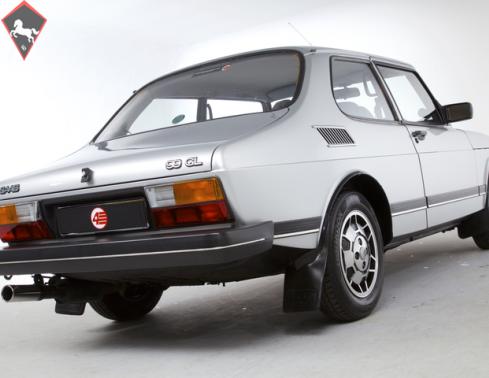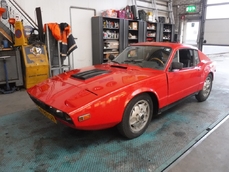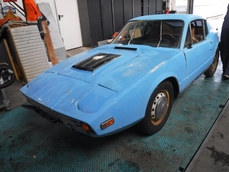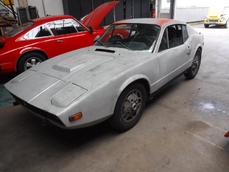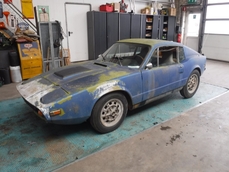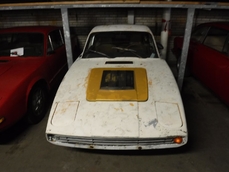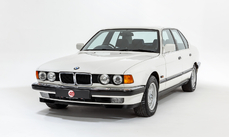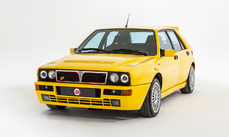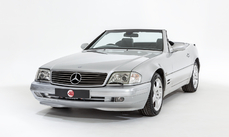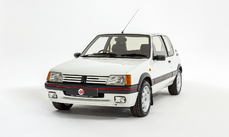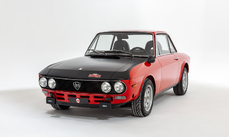Saab Other 1983
General description :
A time warp Saab 99GL, with a mere 27k miles from new.
MODEL HISTORY
The Saab 99 was introduced as a new model in the autumn of 1967 with production ending in 1984. The first engine used in the original 99 was the Triumph 1709cc four-cylinder inline engine, which was tilted at 45 degrees. The engine was water-cooled, but unlike most cars of the time it had an electric cooling fan. However, Saab soon experienced reliability problems with Triumph sourced engines and decided to bring the design home. From September 1972 the 1985cc Saab B engine was used; during the lifetime of the 99 model, several subsequent engine developments took place including the incorporation of fuel injection for some versions.
The two-litre engine was fitted 'back to front', with the clutch at the front. The bonnet was forward-hinged and the panel extended over the front wheel arches. The windscreen was wrap-around and very deep for the era. The A-pillar had a steep angle, providing excellent driver visibility. Writing in 1968, the English test-driver Archie Vicar wrote in Mass Motorist magazine, "The little 99 has been given a striking and wholly rational appearance. It gives the flavour of an aeroplane on four wheels."
The 99 was Saab's last rally car, first in EMS guise and later as the Turbo version. The UK's Mass Motorist magazine summarised their view of the 99 as "comfortable, well-made, satisfying to drive and well-equipped... The BMW 2002 and Alfa Romeo Giulia are the Saab 99's main rivals. I would contend here that Saab has the advantage of them, and should Saab choose to fit an even more powerful motor, the 99 could be a class leader in a short space of time."
The car was wide and low and the suspension gave it handling that was very good for the time. The drag co-efficient was 0.37 while other cars of the time had 0.4 to 0.5. The chassis was also designed for safety. Over the years Saab continued to lead the market with safety innovations such as headlight wipers, which would eventually become a requirement in Sweden. Other innovations would include self-repairing bumpers and heated seats.
Equipment
Twin Weber 40mm carburettors, Rally specification ‘Tangen' unleaded cylinder head and camshaft, Rally exhaust, Electronic ignition, EMS ‘Soccer ball' alloy wheels, Cibié Oscar spotlights, Moto-Lita steering wheel, Headlight wipers, Self-repairing bumpers, Clock, Kenwood CD player with iPod connectivity, Engine and cabin preheater, Cigarette lighter, Front and rear mudflaps, Spare wheel, Spare key.
EXTERIOR
The bright silver metallic paintwork on the Saab remains to an incredibly high standard and has a wonderful, glass-like finish. The bodywork is near impeccable with only one or two very minor imperfections to note, chiefly a couple of light indentations to the roof on the passenger side.
What really sets this car apart is the original bodywork, which remains solid and corrosion-free as a result of having been dry stored for twenty years. Along both sides the car is arrow-straight, and aside from a single protective wheel arch strip, all black trim and rubber seals appear in very good health indeed. All lenses are perfectly clear and free from any chips or cracks, and the additional spotlamps present as new.
INTERIOR
Much like the exterior, the inside of the Saab is in true time-warp condition. All seats remain very supportive displaying absolutely no signs of any wear, and the pale blue velour in which they are upholstered is quite simply stunning. The addition of the Moto-Lita leather steering wheel is a nice period touch.
Furthermore, the dash and fascia present as new with no signs of ageing to any of the components, including the wood-effect inlays. The large dials are crystal clear, and the freshness of the carpets is bettered only by the impeccable door cards. In fact, aside from a minor split in the headlining on the nearside rear pillar, the interior is flawless.
ENGINE & TRANSMISSION
Lifting the large bonnet reveals a very bright engine bay indeed. Consistent with a much younger vehicle with even fewer miles, the engine presents in fantastic order. The majority of the components appear factory-fresh and the inner panels remain completely solid.
Sporting twin Weber 40mm carburettors, a rally specification ‘Tangen' unleaded cylinder head and camshaft, 2.5-inch straight through rally exhaust with two silencers fitted for street use, and a ‘step-up' manifold, this Saab packs a punch like no standard 99 can. The current owner has had the vehicle set up on a rolling road with the carburettors and ignition tuned accordingly for perfect driving. Professionally installed, all steps were taken to provide maximum reliability and with all round genuine Bilstein B6 shock absorbers fitted, drivability is in no way compromised.
The car is producing 160hp, which is 15 more than the legendary 99 Turbo did when new. The clutch and release bearing were replaced in October 2010, and most recently a major service has been carried out to include a brake system flush and bleed. What's more, oil and filters have been changed every year. A new battery was also fitted in 2012, and a new radiator in 2013.
WHEELS, TYRES & BRAKES
The Saab sits on the 15-inch EMS ‘soccer ball' polished alloy wheels that have been recently refurbished to a great standard. As such there is no unsightly curb marking or age-related wear to behold.
The wheels are shod in a matching set of Hankook Optimo tyres, each with ample tread remaining. As a result of Saab's safety conscious attitude the 99 also features disc brakes all round, which all show plenty of life left. What's more, the car has been recently under-sealed and is very well protected from the elements.
HISTORY FILE
Assembled by Saab-Valmet in 1982, this 99 was not registered until 1st July 1983. It was originally supplied in Nottingham and has remained in the UK throughout its life, covering a mere 26,873 miles in such time.
The car was dry stored between 1984 and 2004 at which point it was rediscovered by the owner's family. It's time in storage ensured that until 2010 the car had just 5,200 miles, and required very little work to bring it back to its factory condition. The car was soon awarded Winner of the 2012 Swedish Day "Most Admired Saab" and the 2013 Swedish Day "Best Modified Swede", along with earlier awards and a full feature road test in Classic Car Weekly.
The current owner has meticulously organized the car's history file, which contains a veritable wealth of paperwork documenting the Saab's life to date. Along with several MOT certificates, a handful of old tax discs, as well as countless receipts, there is an extensive range of invoices detailing an assortment of work that has been carried out on the car over recent years. Present also are the original Owner's Handbook and service cards.
http://www.4starclassics.com/saab-99gl-for-sale/
1983 Saab Other is listed sold on ClassicDigest in Kingsley by 4 Star Classics for £17995.
Car Facts
Car type : Car Make : Saab Model : Other Engine size : 2.0 Model Year : 1983 Location : Hampshire Vehicle Registration : Normal
Sold
Seller Information
Sold
People who viewed this Saab Other also viewed similar Saab listed at ClassicDigest
Other cars listed for sale by this dealer
About Saab
Saab, originally an acronym for Svenska Aeroplan Aktiebolaget (Swedish Aeroplane Company), began its journey as an aircraft manufacturer in 1937. Founded in Sweden, Saab's primary focus was on producing fighter planes and military aircraft. Over time, the company diversified its interests and ventured into automobile manufacturing, which eventually led to the creation of quirky yet innovative cars that stood out in the automotive industry.Fighter Plane Manufacturing:
Saab's history in the aviation industry was marked by its production of innovative fighter planes. One of its most iconic aircraft was the Saab 29 Tunnan, introduced in the early 1950s. The Tunnan was notable for its unique design, featuring a barrel-shaped fuselage, which earned it the nickname "The Flying Barrel." It was powered by a single jet engine and became Sweden's first domestically produced jet-powered fighter aircraft.
Following the success of the Tunnan, Saab continued to develop advanced military aircraft. The Saab 35 Draken, introduced in the late 1950s, was another milestone for the company. The Draken was a delta-winged interceptor known for its remarkable speed and distinctive double-delta wing configuration. Its innovative design allowed for excellent maneuverability and performance, making it a significant asset in Sweden's air defense arsenal for several decades.
Transition to Automobile Manufacturing:
In the late 1940s, Saab expanded its operations into the automotive industry. The company's first foray into car manufacturing resulted in the production of the Saab 92, which debuted in 1949. The Saab 92 was a compact and aerodynamic car powered by a two-cylinder, two-stroke engine. Its unconventional design, with a streamlined shape and front-wheel-drive layout, set it apart from other cars of its time.
As Saab continued to innovate, it introduced several notable models in the automotive market. The Saab 99, launched in the late 1960s, was a significant milestone for the company. It featured distinctive styling, including a wraparound windshield and a unique "hockey stick" profile, giving it a recognizable appearance. The Saab 99 also introduced technical advancements such as turbocharging, enhancing performance and fuel efficiency.
The evolution continued with the Saab 900, introduced in the late 1970s, which became one of the company's most iconic models. The Saab 900 was known for its robust build quality, innovative safety features, and unconventional design elements, including the signature wraparound windshield. It offered turbocharged engines and a versatile hatchback body style, catering to a niche market seeking individuality and practicality.
Technical Aspects and Quirks:
Saab cars were characterized by their technical innovations and unique features. Some of the standout technical aspects and quirks of Saab automobiles include:
Turbocharging: Saab was one of the pioneers in popularizing turbocharged engines in passenger cars, significantly enhancing power output without sacrificing fuel efficiency.
Safety Innovations: Saab prioritized safety and introduced various safety features, including reinforced passenger compartments, impact-absorbing structures, and advanced braking systems.
Aircraft-Inspired Design: The company incorporated design elements inspired by its aviation heritage, such as aerodynamic shapes, wraparound windshields, and unconventional styling cues.
Ergonomics and Practicality: Saab cars were known for their comfortable interiors, innovative ergonomics, and practical features like the ignition key placement between the front seats.
Quirkiness: Saab cars often featured unconventional design choices and solutions, appealing to a niche audience seeking something different from mainstream automobile offerings.
Saab's journey from a renowned fighter plane manufacturer to a builder of quirky yet innovative cars highlights its commitment to innovation, unique design, and technological advancement in both the aviation and automotive industries. Despite facing challenges and changes in ownership over the years, Saab's legacy endures through its distinct and unconventional approach to vehicle design and engineering.
